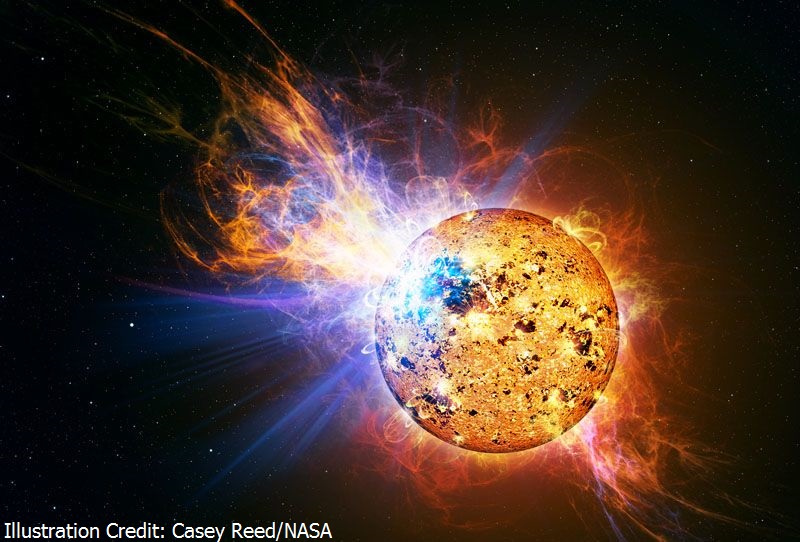
Strong Flares on Small Stars
I also work on characterizing the magnetic activity and circumstellar material of dM stars. The stars, small, cooler, and more dense than our Sun, are particularly interesting due to their frequency; they are the most common stars in the solar neighborhood. They are also excellent targets for exoplanet searches via the radial-velocity and transit methods. Despite their commonality, there are very few known disks around these stars, which makes each new disk discovered around such a star particularly valuable for study.
These stars are also known for their very strong flares, which can be orders of magnitude stronger than those seen on the Sun. These are of particular interest, as they could directly impact the habitability of exoplanets around these stars. It is thus critical to characterize these flares: how often they occur, at what energies, and how they might impact a potentially-habitable planet.
Characterizing Flares on GJ 1243
I recently completed my masters thesis on the flaring dM star GJ 1243, the most active flaring M dwarf in the Kepler field of view. Using eleven months of high-cadence Kepler photometry, and one half-night of simultaneous spectroscopic observation, we characterized the star's flare frequency distribution, finding a potential variation in the exponent of the power-law distribution. We also identified a potential explanation for the observed morphology of classical flares as observed by Kepler, and developed approximate conversions from the Kepler bandpass to the traditional U and B bands (Silverberg et al. 2016).